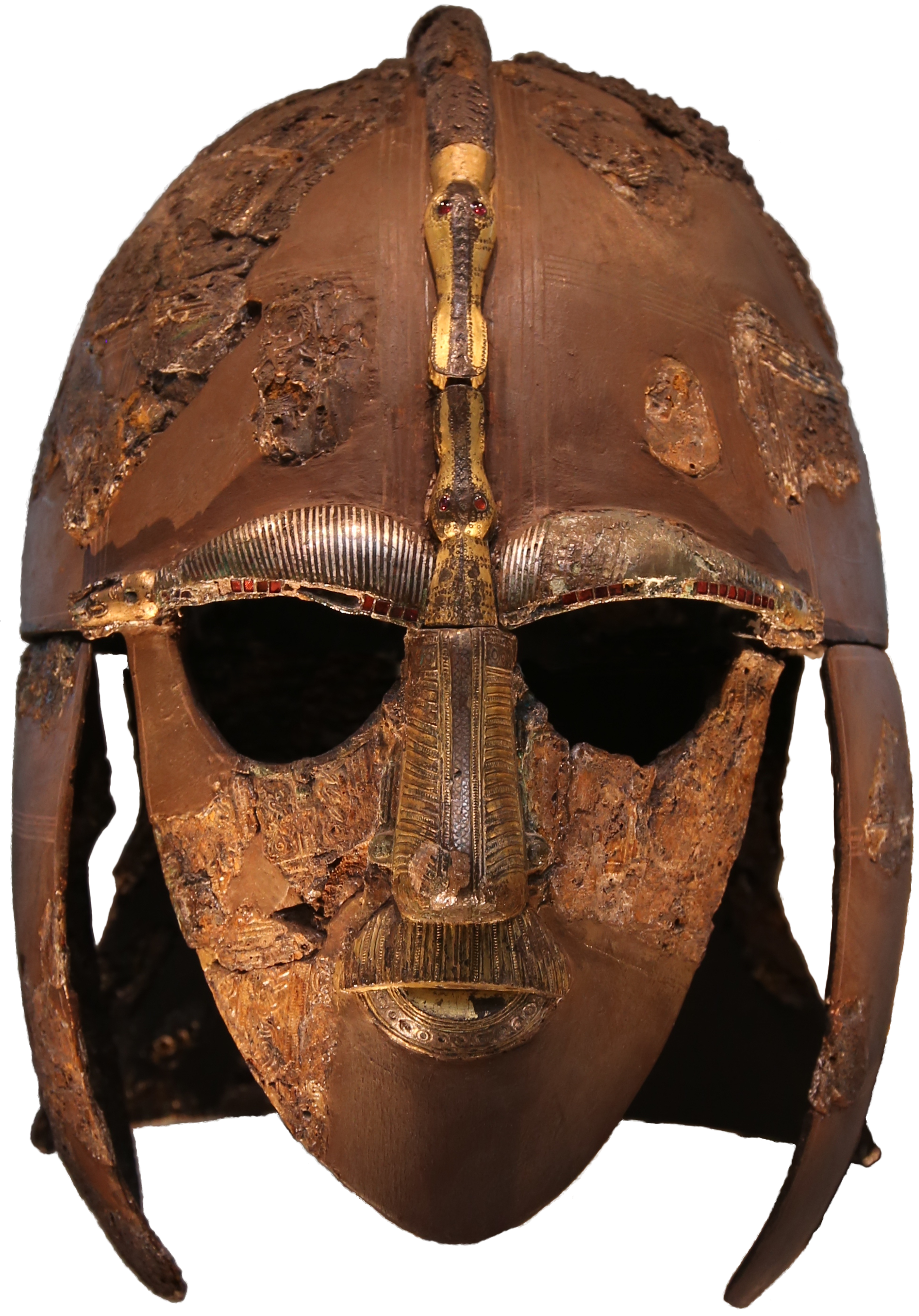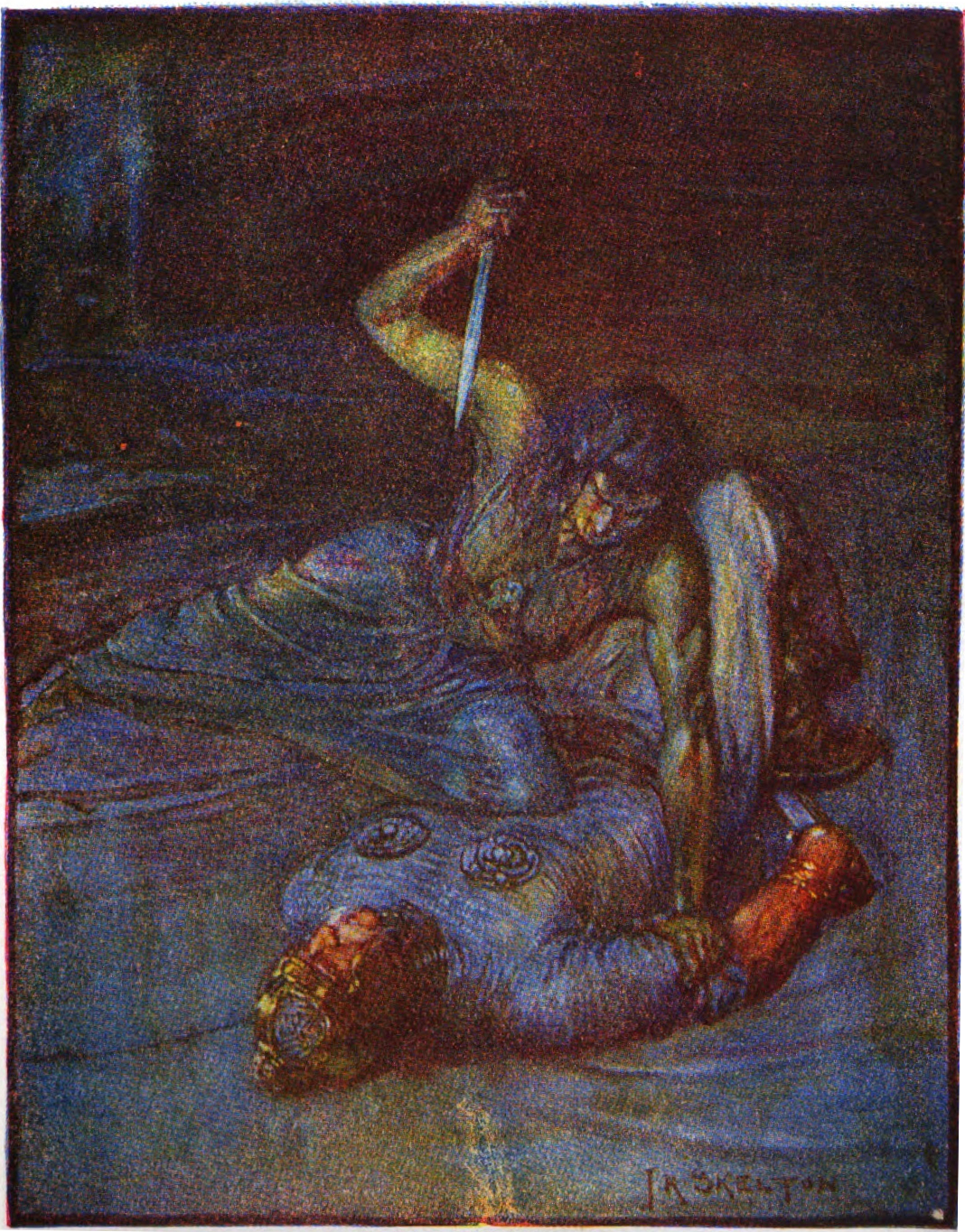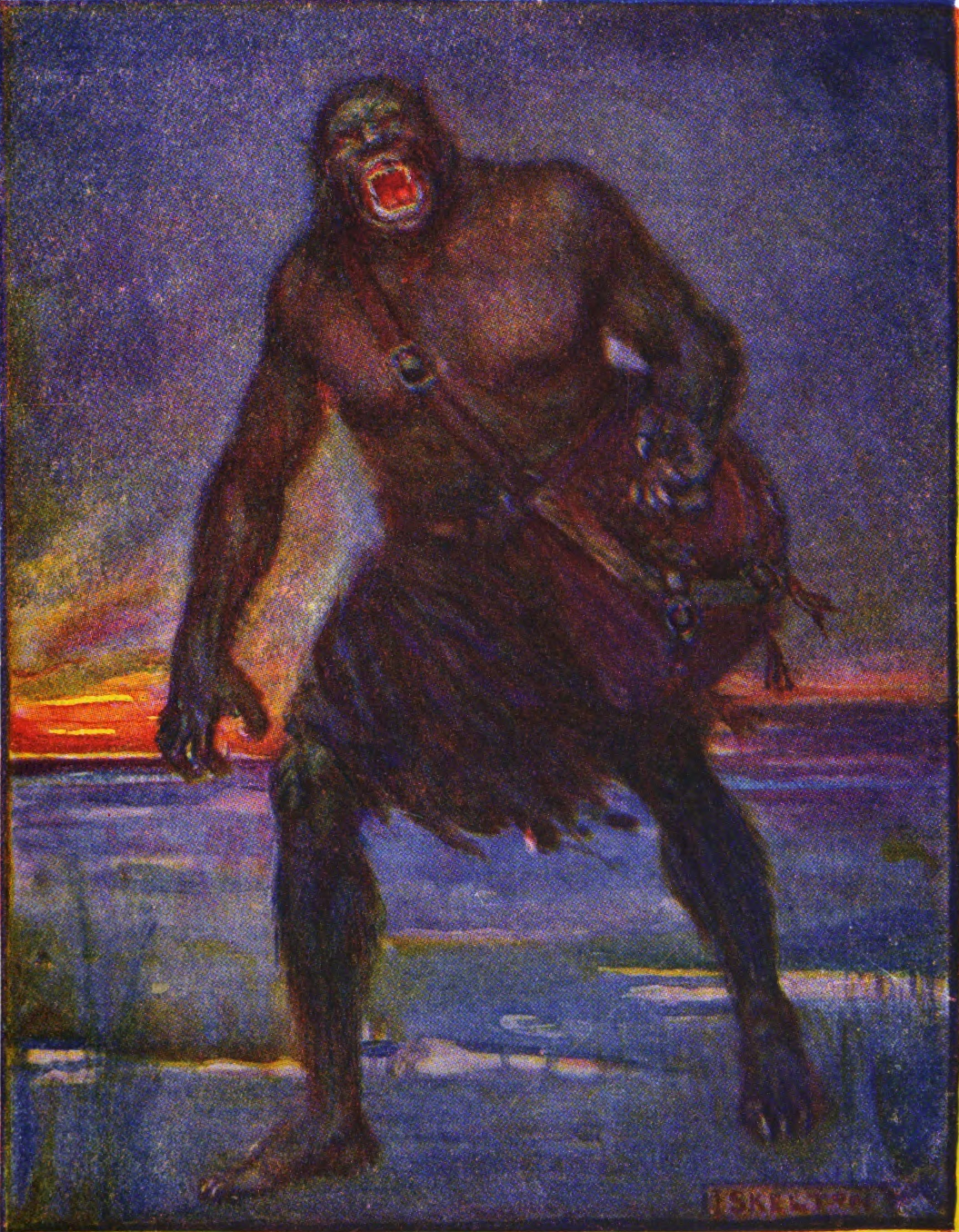|
Beowulf
''Beowulf'' (; ang, Bēowulf ) is an Old English epic poem in the tradition of Germanic heroic legend consisting of 3,182 alliterative lines. It is one of the most important and most often translated works of Old English literature. The date of composition is a matter of contention among scholars; the only certain dating is for the manuscript, which was produced between 975 and 1025. Scholars call the anonymous author the "''Beowulf'' poet". The story is set in pagan Scandinavia in the 6th century. Beowulf, a hero of the Geats, comes to the aid of Hrothgar, the king of the Danes, whose mead hall in Heorot has been under attack by the monster Grendel. After Beowulf slays him, Grendel's mother attacks the hall and is then defeated. Victorious, Beowulf goes home to Geatland and becomes king of the Geats. Fifty years later, Beowulf defeats a dragon, but is mortally wounded in the battle. After his death, his attendants cremate his body and erect a tower on a headland in ... [...More Info...] [...Related Items...] OR: [Wikipedia] [Google] [Baidu] |
List Of Translations Of Beowulf
This is a list of translations of ''Beowulf'', one of the best-known Old English heroic epic poems. ''Beowulf'' has been translated many times in verse and in prose. By 2020, the Beowulf's Afterlives Bibliographic Database listed some 688 translations and other versions of the poem, from Thorkelin's 1787 transcription of the text, and in at least 38 languages. The poet John Dryden '' John Dryden (; – ) was an English poet, literary critic, translator, and playwright who in 1668 was appointed England's first Poet Laureate. He is seen as dominating the literary life of Restoration England to such a point that the per ...'s categories of translation have influenced how scholars discuss variation between translations and adaptations. In the ''Preface to Ovid's Epistles'' (1680) Dryden proposed three different types of translation: The works listed below may fall into more than one of Dryden's categories, but works that are essentially direct translations are listed h ... [...More Info...] [...Related Items...] OR: [Wikipedia] [Google] [Baidu] |
Grendel's Mother
Grendel's mother ( ang, Grendles mōdor) is one of three antagonists in the anonymous Old English poem ''Beowulf'' (c. 700-1000 AD), the other two being Grendel and the dragon. Each antagonist reflects different negative aspects of both the hero Beowulf and the heroic society that the poem is set in. Grendel's mother is introduced in lines 1258b to 1259a as: "Grendles modor/ides, aglæcwif". Grendel's mother, who is never given a name in the text, is the subject of an ongoing controversy among medieval scholars. This controversy is due to the ambiguity of a few words in Old English which appear in the original ''Beowulf'' manuscript. While there is agreement over the word "modor" (mother), the phrase "ides, aglæcwif" is the subject of scholarly debate. Story The poem, ''Beowulf,'' is contained in the Nowell Codex. As noted in lines 106–114 and lines 1260–1267 of ''Beowulf,'' monsters (which include Grendel's mother and Grendel) are descendants of Cain. After Grendel i ... [...More Info...] [...Related Items...] OR: [Wikipedia] [Google] [Baidu] |
Unferð
In the Old English epic poem ''Beowulf'', Unferth or Hunferth is a thegn (a retainer, servant) of the Danish lord Hrothgar. He appears five times in the poem — four times by the name 'Hunferð' (at lines 499, 530, 1165 and 1488) and once by the appellation "the son of Eclafes" (at line 980). The name ''Unferth'' does not appear in any Old English manuscript outside of the Nowell Codex, which contains ''Beowulf'', and the meaning of the name is disputed. Several scholarly theories about Unferth have been proposed. Unferth is also the name of a character in the modern novel '' Grendel'' by John Gardner, based upon the ''Beowulf'' epic. Etymology Unferth's name can be understood in a number of ways. A common reading, by Morton W. Bloomfield is to see it as ''un'' + ''frith'', "mar peace": similarly, J. R. R. Tolkien considered the name to mean Unpeace/Quarrel, or perhaps 'Unfriend'. However, Searle's ''Onomasticon Anglo-Saxonicum'' lists several mentions of medieval historic per ... [...More Info...] [...Related Items...] OR: [Wikipedia] [Google] [Baidu] |
Hrothgar
Hrothgar ( ang, Hrōðgār ; on, Hróarr) was a semi-legendary Danish king living around the early sixth century AD. Hrothgar appears in the Anglo-Saxon epics ''Beowulf'' and ''Widsith'', in Norse sagas and poems, and in medieval Danish chronicles. In both Anglo-Saxon and Scandinavian tradition, Hrothgar is a Scylding, the son of Halfdan, the brother of Halga, and the uncle of Hrólfr Kraki. Moreover, in both traditions, the mentioned characters were the contemporaries of the Swedish king Eadgils; and both traditions also mention a feud with men named Fróði and Ingeld. The consensus view is that Anglo-Saxon and Scandinavian traditions describe the same person. Names Hrothgar, also rendered ''Hrōðgār'', is an Old English form attested in ''Beowulf'' and ''Widsith'', the earliest sources to mention the character. In non-English sources, the name appears in more or less corresponding Old Icelandic, Old Danish, and Latinized versions. He appears as ''Hróarr'', ''Hroar'', ... [...More Info...] [...Related Items...] OR: [Wikipedia] [Google] [Baidu] |
Beowulf (hero)
Beowulf (; ang, Bēowulf ) is a legendary Geatish hero in the eponymous epic poem, one of the oldest surviving pieces of English literature. Etymology and origins of the character A number of origins have been proposed for the name ''Beowulf''. Beowulf Henry Sweet, a philologist and linguist specializing in Germanic languages, proposed that the name ''Bēowulf'' literally means in Old English "bee-wolf" or "bee-hunter" and that it is a kenning for "bear".Sweet, Henry. (1884) ''Anglo-Saxon Reader in Prose and Verse'' The Clarendon Press, p. 202. Recorded instances of similar names mirror this etymology. The AD 1031 ''Liber Vitae'' records the name ''Biuuuwulf''. The name is attested to a monk from Durham and means ''bee wolf'' in the Old Northumbrian dialect.Chadwick, Hector Munro (1983) ''The Origin of the English Nation'', p. 294. The 11th century English ''Domesday Book'' contains a recorded instance of the name ''Beulf''. The scholar suggested that the name ''Beowulf'' de ... [...More Info...] [...Related Items...] OR: [Wikipedia] [Google] [Baidu] |
Grendel
Grendel is a character in the Anglo-Saxon epic poem '' Beowulf'' (700–1000). He is one of the poem's three antagonists (along with his mother and the dragon), all aligned in opposition against the protagonist Beowulf. Grendel is feared by all in Heorot but Beowulf. A descendant of Cain, Grendel is described as "a creature of darkness, exiled from happiness and accursed of God, the destroyer and devourer of our human kind". He is usually depicted as a monster or a giant, although his status as a monster, giant, or other form of supernatural being is not clearly described in the poem and thus remains the subject of scholarly debate. The character of Grendel and his role in the story of ''Beowulf'' have been subject to numerous reinterpretations and re-imaginings. Story Grendel is a character in the poem ''Beowulf,'' preserved in the ''Nowell Codex''. Grendel, being cursed as the descendant of the Biblical Cain, is "harrowed" by the sounds of singing that come every night ... [...More Info...] [...Related Items...] OR: [Wikipedia] [Google] [Baidu] |
Wiglaf
Wiglaf (Proto-Norse: *'' Wīga laibaz'', meaning "battle remainder"; ang, Wīġlāf ) is a character in the Anglo-Saxon epic poem ''Beowulf''. He is the son of Weohstan, a Swede of the Wægmunding clan who had entered the service of Beowulf, king of the Geats. Wiglaf is called ''Scylfing'' as a metonym for Swede, as the Scylfings were the ruling Swedish clan. While in the service of the Scylfing Onela, king of the Swedes, Weohstan killed the rebel prince Eanmund and took his sword as a trophy;Lines 2612-2615. Wiglaf later inherited it.Lines 2620-2624. Weohstan belonged to the clan of the Wægmundings, the same clan Beowulf's father Ecgþeow belonged to; so Wiglaf is Beowulf's distant cousin, and his only living relative at the time of Beowulf's death. Scholars have proposed various interpretations of Wiglaf's role in the poem, but agree that he is important, and that he was Beowulf's nephew, a key relationship in heroic tales of the period. Wiglaf has a counterpart in Scandin ... [...More Info...] [...Related Items...] OR: [Wikipedia] [Google] [Baidu] |
Hrólfr Kraki
Hrólfr Kraki (Old Norse: ), ''Hroðulf'', ''Rolfo'', ''Roluo'', ''Rolf Krage'' (early 6th century) was a semi-legendary Danish king who appears in both Anglo-Saxon and Scandinavian tradition. Both traditions describe him as a Danish Scylding, the nephew of Hroðgar and the grandson of Healfdene. The consensus view is that Anglo-Saxon and Scandinavian traditions describe the same people. Whereas the Anglo-Saxon ''Beowulf'' and ''Widsith'' do not go further than treating his relationship with Hroðgar and their animosity with Froda and Ingeld, the Scandinavian sources expand on his life as the king at Lejre and on his relationship with Halga, Hroðgar's brother. In ''Beowulf'' and ''Widsith'', it is never explained how Hroðgar and Hroðulf are uncle and nephew. ''Beowulf'' The poem ''Beowulf'' introduces Hroðulf as kinsman. Later, the text explains that Hroðulf is Hroðgar's nephew and that "each was true to the other". Hroðgar is given three siblings, brothers Heorogar a ... [...More Info...] [...Related Items...] OR: [Wikipedia] [Google] [Baidu] |
Old English Literature
Old English literature refers to poetry and prose written in Old English in early medieval England, from the 7th century to the decades after the Norman conquest of England, Norman Conquest of 1066, a period often termed Anglo-Saxon England. The 7th-century work ''Cædmon's Hymn'' is often considered as the oldest surviving poem in English, as it appears in an 8th-century copy of Bede's text, the ''Ecclesiastical History of the English People''. Poetry written in the mid 12th century represents some of the latest post-Norman examples of Old English. Adherence to the grammatical rules of Old English is largely inconsistent in 12th-century work, and by the 13th century the grammar and syntax of Old English had almost completely deteriorated, giving way to the much larger Middle English literature, Middle English corpus of literature. In descending order of quantity, Old English literature consists of: sermons and saints' lives; biblical translations; translated Latin works of the ... [...More Info...] [...Related Items...] OR: [Wikipedia] [Google] [Baidu] |
Nowell Codex
The Nowell Codex is the second of two manuscripts comprising the bound volume Cotton MS Vitellius A XV, one of the four major Anglo-Saxon poetic manuscripts. It is most famous as the manuscript containing the unique copy of the epic poem ''Beowulf''. In addition to this, it contains first a fragment of ''The Life of Saint Christopher'', then the more complete texts ''Wonders of the East'' and ''Letter of Alexander to Aristotle'', and, after ''Beowulf'', a poetic translation of ''Judith''. Due to the fame of ''Beowulf'', the Nowell Codex is also sometimes known simply as the ''Beowulf'' manuscript. The manuscript is located within the British Library with the rest of the Cotton collection. Name and date The current codex is a composite of at least two manuscripts. The main division is into two totally distinct books which were apparently not bound together until the 17th century. The first of these, originally owned by Southwick Priory in Hampshire, dates from the 12th century ... [...More Info...] [...Related Items...] OR: [Wikipedia] [Google] [Baidu] |
Heorot
Heorot (Old English 'hart, stag') is a mead-hall and major point of focus in the Anglo-Saxon poem ''Beowulf''. The hall serves as a seat of rule for King Hrothgar, a legendary Danish king. After the monster Grendel slaughters the inhabitants of the hall, the Geatish hero Beowulf defends the royal hall before subsequently defeating him. Later Grendel's mother attacks the inhabitants of the hall, and she too is subsequently defeated by Beowulf. Name The name ''Heorot'' is the Old English word for a stag. Its use may stem from an association between royalty and stags in Germanic paganism. Archaeologists have unearthed a variety of Anglo-Saxon finds associating stags with royalty. For example, a sceptre or whetstone discovered in mound I of the Anglo-Saxon burial site Sutton Hoo prominently features a standing stag at its top.For general discussion, see Fulk, Bjork, & Niles (2008:119–120). For images and details regarding the sceptre or whetstone, see the British Museum'collectio ... [...More Info...] [...Related Items...] OR: [Wikipedia] [Google] [Baidu] |
Germanic Heroic Legend
Germanic heroic legend (german: germanische Heldensage) is the heroic literary tradition of the Germanic-speaking peoples, most of which originates or is set in the Migration Period (4th-6th centuries AD). Stories from this time period, to which others were added later, were transmitted orally, traveled widely among the Germanic speaking peoples, and were known in many variants. These legends typically reworked historical events or personages in the manner of oral poetry, forming a heroic age. Heroes in these legends often display a heroic ethos emphasizing honor, glory, and loyalty above other concerns. Like Germanic mythology, heroic legend is a genre of Germanic folklore. Heroic legends are attested in Anglo-Saxon England, medieval Scandinavia, and medieval Germany. Many take the form of Germanic heroic poetry (german: germanische Heldendichtung): shorter pieces are known as heroic lays, whereas longer pieces are called Germanic heroic epic (). The early Middle Ages preser ... [...More Info...] [...Related Items...] OR: [Wikipedia] [Google] [Baidu] |










